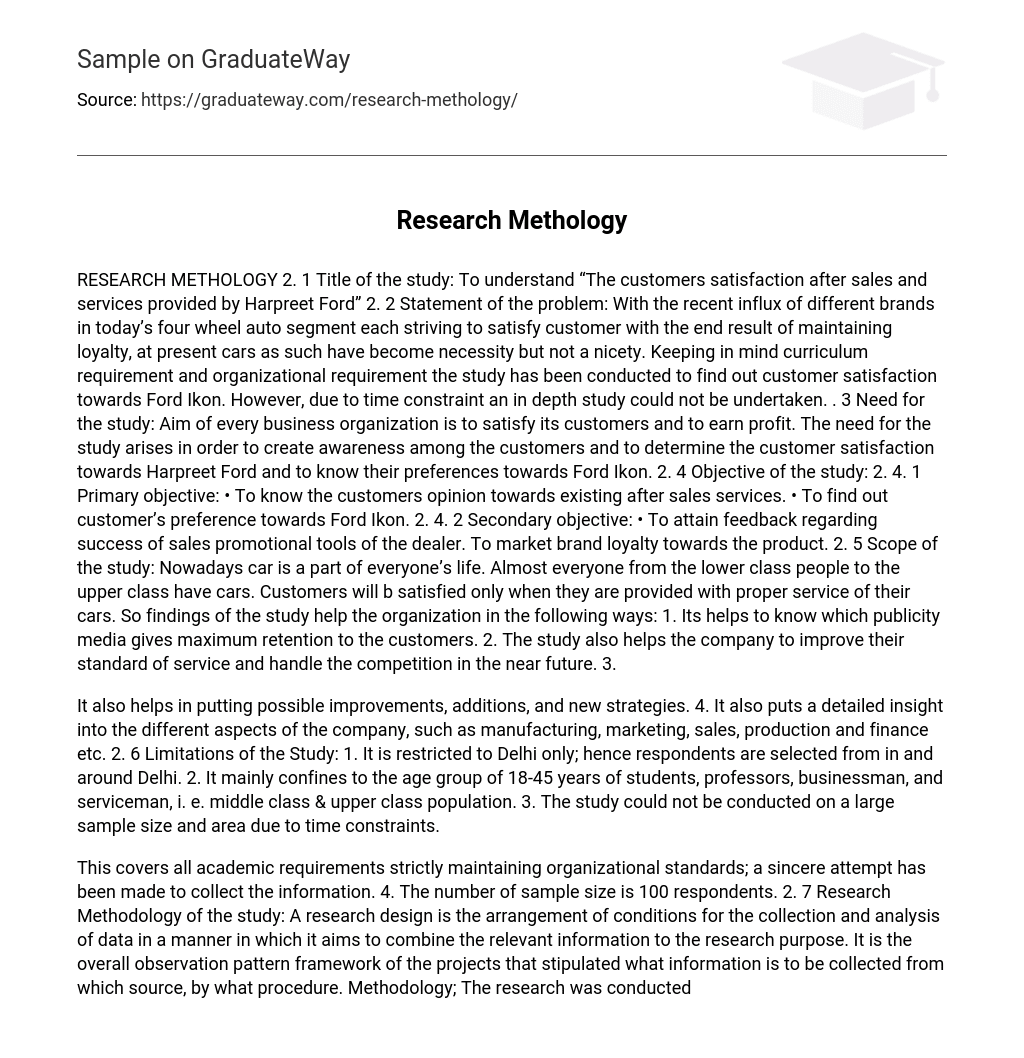Study Title:
Investigation into the level of customer satisfaction with Harpreet Ford’s after-sales services
Statement of the problem: The rise in the number of brands in the four-wheel auto segment has made cars a necessity rather than a luxury, as each brand strives to retain customer loyalty. This study focuses on determining customer satisfaction with Ford Ikon, considering curriculum and organizational requirements. However, due to time limitations, a comprehensive study could not be conducted.
Objective of the study: The objective of this study is to raise customer awareness and evaluate their satisfaction with Harpreet Ford, as well as understand their preferences for the Ford Ikon.
The purpose of the study:
Primary objective:
- To know the customers opinion towards existing after sales services.
- To find out customer’s preference towards Ford Ikon.
The secondary goal is:
- To attain feedback regarding success of sales promotional tools of the dealer.
- To market brand loyalty towards the product.
Scope of the study:
The study focuses on the widespread presence of cars in society, ranging from lower class individuals to higher class individuals. It emphasizes the importance of providing quality car service to fulfill customer satisfaction. The findings of this study have several benefits for the organization, including:
- Its helps to know which publicity media gives maximum retention to the customers.
- The study also helps the company to improve their standard of service and handle the competition in the near future.
- It also helps in putting possible improvements, additions, and new strategies.
- It also puts a detailed insight into the different aspects of the company, such as manufacturing, marketing, sales, production and finance etc.
Study Limitations:
- It is restricted to Delhi only; hence respondents are selected from in and around Delhi.
- It mainly confines to the age group of 18-45 years of students, professors, businessman, and serviceman, i. e. middle class & upper class population.
- The study could not be conducted on a large sample size and area due to time constraints.
- This covers all academic requirements strictly maintaining organizational standards; a sincere attempt has been made to collect the information.
- The number of sample size is 100 respondents.
The research methodology of the study: The research design used in this study involves gathering and analyzing data. It determines what information is collected, where it comes from, and how it is obtained. For this specific study, a questionnaire survey method was used to gain insights into customer satisfaction regarding brand, product, price, and promotion aspects. A structured questionnaire was employed to collect data on factors like attitude, satisfaction levels, and mode of purchase. This methodology was chosen because it can provide reliable information.
Source of Data:
- Primary Data: Primary data refers to the data collected a fresh or at first hand by the researcher. In this survey method, it is collected by means of observation and structured questionnaire. The questions are carefully framed in simple and direct words to enable easy response from the respondents.
- Secondary Data: Secondary data are those which have already been collected by other people and which have already been passed through a statistical process. Here, the secondary data was collected from company profile, records and personal discussions with the officials as well as with help from books, journals and websites.
Research Instrument (Questionnaire): The questionnaire is a set of questions presented to respondents for their answers. It consists of simple, direct, unbiased wording. All questions are framed in multiple options so that it is easy for the respondent. The primary data collected through the questionnaire was done in Delhi at Harpreet Ford under the external guide Mr. Tandon, general manager of the showroom.
Plan of analysis: The collected data from the questionnaires was processed and analyzed. The information was carefully sorted and organized into different categories. Each question was examined and tabulated separately. In order to gain a better understanding of the satisfaction of the target population, their answers were analyzed in relation to their personal data.





